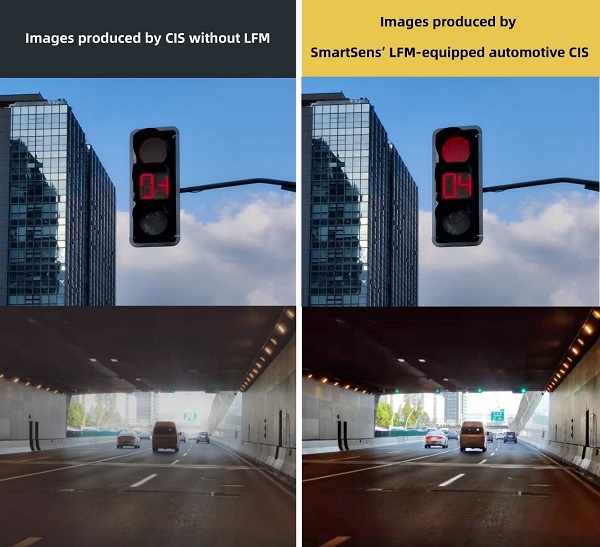SmartSens announced the release of its proprietary LED Flicker Suppression (LFS) technology which helps SmartSens' CMOS image sensors to effectively mitigate the dangers that often accompany LED flicker, making AI-enabled Advanced Driver-Assistance Systems (or ADAS) and Autonomous Vehicles safer.

Comparison of images produced with and without SmartSens' LED Flicker Suppression technology; image: SmartSens
LED has gradually replaced traditional lighting options in various automotive applications including headlamps and turn signals. However, since LED drivers often utilize Pulse Width Modulation (PWM) signals, LED lights actually "flicker" at frequencies imperceptible to the unaided eye. For CMOS image sensors that have even faster shutter speeds, mismatch between exposure time and LED pulse could lead to sensors picking up inaccurate visual signals. For automotive applications that prioritize safety, this is simply unacceptable.
With autonomous vehicles globally attaining L4 and L5 capabilities, cars increasingly rely on CMOS image sensors making accurate readings to correctly assess road conditions, a necessary prerequisite for AI systems to compute optimal next steps. This means that automotive CMOS image sensors must adapt to modern traffic signal systems by being able to distinguish between the on and off states of LEDs.
While various CMOS manufacturers have introduced their own solutions to this issue, SmartSens has opted for a more distinct approach, innovatively using its proprietary QCell™ technology to effectively mitigate LED flickering. Beyond simply solving the LED flicker issue, this solution has the added benefit of increasing a sensor's sensitivity and dynamic range, making it ideal for dim or fluctuating lighting situations, such as the openings of carports and tunnels.












